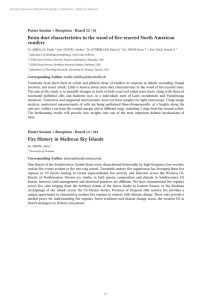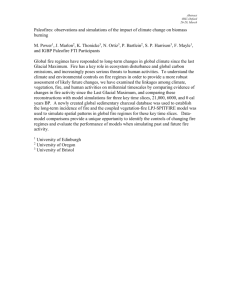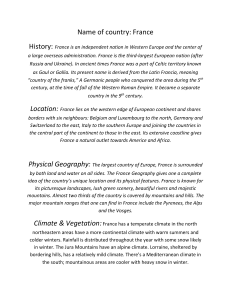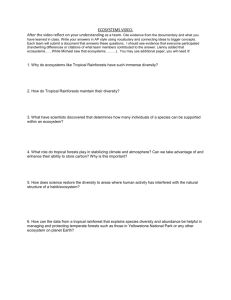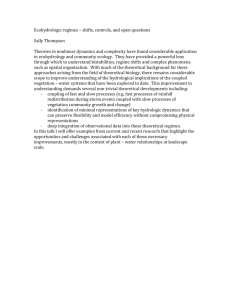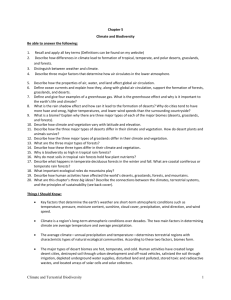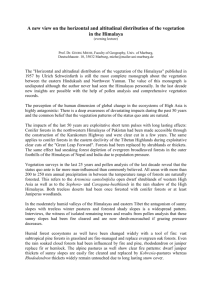Fire in eastern ecosystems
advertisement
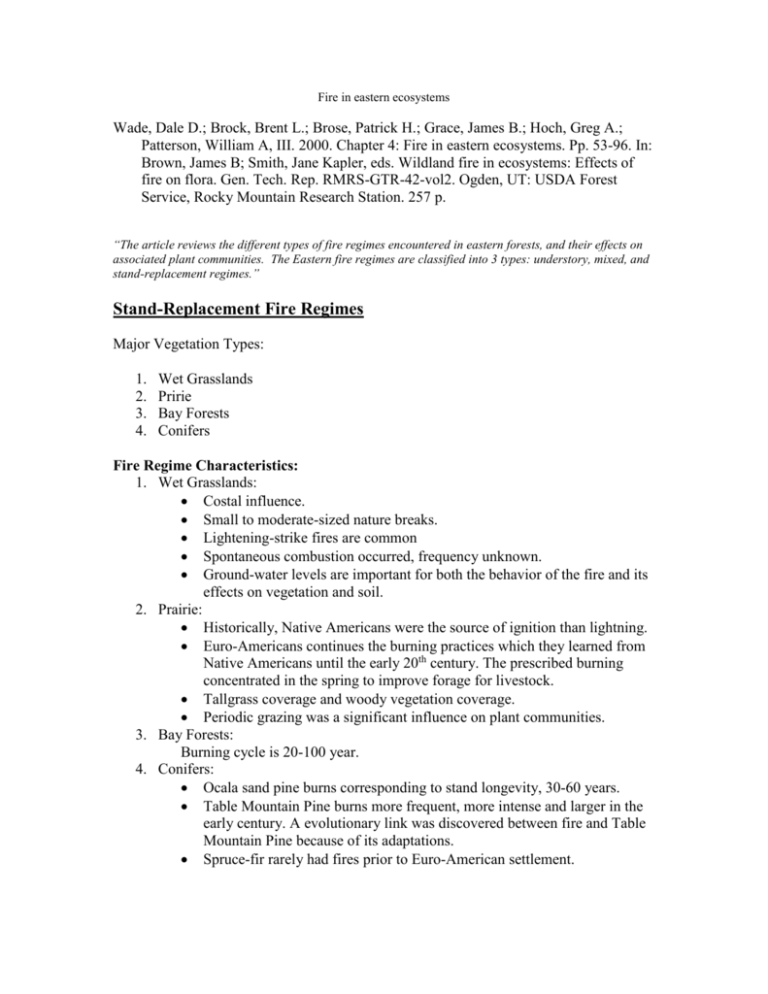
Fire in eastern ecosystems Wade, Dale D.; Brock, Brent L.; Brose, Patrick H.; Grace, James B.; Hoch, Greg A.; Patterson, William A, III. 2000. Chapter 4: Fire in eastern ecosystems. Pp. 53-96. In: Brown, James B; Smith, Jane Kapler, eds. Wildland fire in ecosystems: Effects of fire on flora. Gen. Tech. Rep. RMRS-GTR-42-vol2. Ogden, UT: USDA Forest Service, Rocky Mountain Research Station. 257 p. “The article reviews the different types of fire regimes encountered in eastern forests, and their effects on associated plant communities. The Eastern fire regimes are classified into 3 types: understory, mixed, and stand-replacement regimes.” Stand-Replacement Fire Regimes Major Vegetation Types: 1. 2. 3. 4. Wet Grasslands Pririe Bay Forests Conifers Fire Regime Characteristics: 1. Wet Grasslands: Costal influence. Small to moderate-sized nature breaks. Lightening-strike fires are common Spontaneous combustion occurred, frequency unknown. Ground-water levels are important for both the behavior of the fire and its effects on vegetation and soil. 2. Prairie: Historically, Native Americans were the source of ignition than lightning. Euro-Americans continues the burning practices which they learned from Native Americans until the early 20th century. The prescribed burning concentrated in the spring to improve forage for livestock. Tallgrass coverage and woody vegetation coverage. Periodic grazing was a significant influence on plant communities. 3. Bay Forests: Burning cycle is 20-100 year. 4. Conifers: Ocala sand pine burns corresponding to stand longevity, 30-60 years. Table Mountain Pine burns more frequent, more intense and larger in the early century. A evolutionary link was discovered between fire and Table Mountain Pine because of its adaptations. Spruce-fir rarely had fires prior to Euro-American settlement. Atlantic White-Cedar was mostly perpetuated by major disturbances with 25-300 years crown fire interval. Fuels and Fire Behavior 1. Wet Grasslands: Variable flammability. Cordgrass communities are capable of carrying fire over standing water. Most communities tend to burn under very dry conditions. 2. Prairie Fuel loadings range from 1.1 tons/acres to 3.4 tons/acres. Historical fires with flame lengths of 8-15 feet. 3. Bay Forests Fuel loadings of accumulated dead and live understory fuels. Forest floor and downed woody fuels average of 10 tons/acre 4. Conifers: Heavy fuel loadings. Shorter flame length 2-3 feet.
